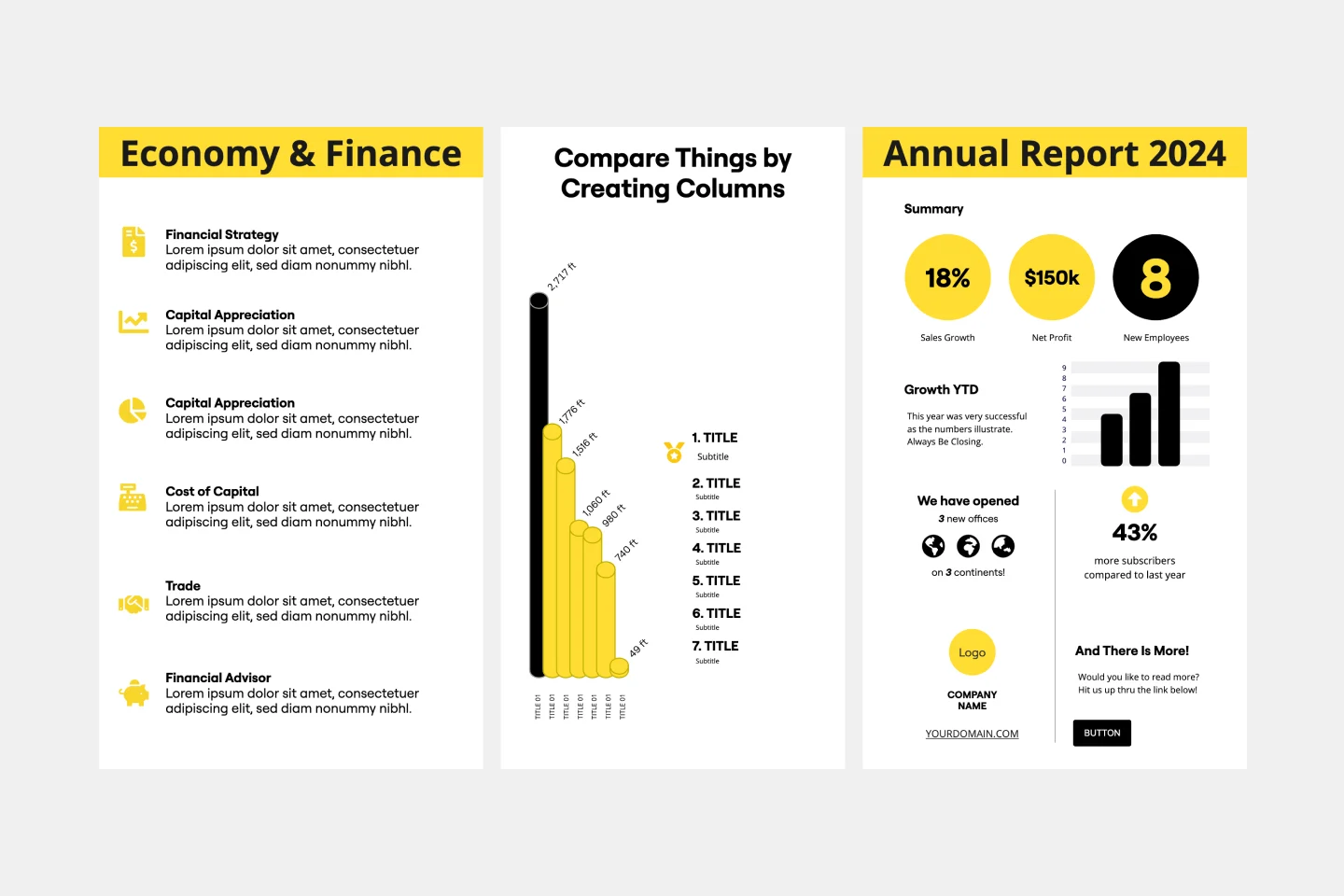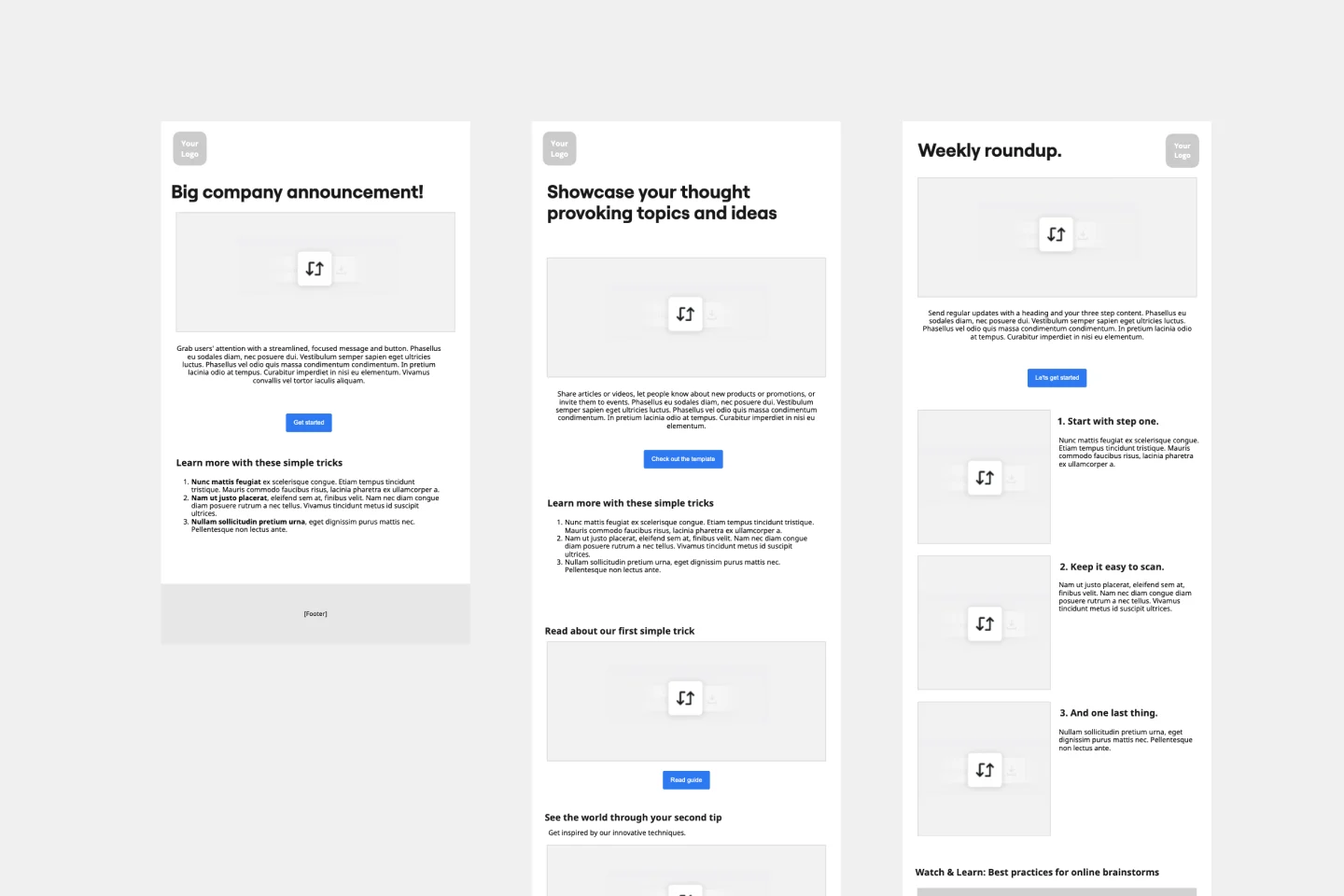About the Flyer Maker Template
Whether you’re hosting an event, fundraising, or trying to grow your online business, you’ll want to create a flyer to tell the world.
A flyer is a single-page advertisement that lets people know about a certain cause, business, or event. Flyers are simple, visually striking, and clear. Use this flyer maker template to easily create and share your next flyer.
What is a Flyer?
A flyer is one of the last bastions of paper advertisement, still standing strong to this day. If you’re unfamiliar with this traditional form of advertising, a flyer is a piece of paper designed to promote an upcoming event or service or raise awareness about a business.
Here are some of the most common instances in which you might find a flyer useful:
Starting a business
Promoting an upcoming event
Raising money for charity
Raising awareness for a missing pet
Advertising a bake sale
You’d be surprised what you can achieve with a single piece of paper, even in a day and age in which digital advertising reigns supreme. A flyer is a simple, visually striking piece of paper promotional material. It informs people, at a glance, what they need to know about your business, cause, or event.
A flyer design is more than just an image on a sheet of paper; it usually features copy that drives home the message you wish to convey.
For example, if you’re hosting an event, your flyer might reveal key details such as where it’s being held, what you should bring, and what the dress code is. If you’re advertising for a charitable cause or trying to raise money, your flyer will include information about where the money is going, what you aim to achieve, and how the public can help.
Create your own flyer
Making your own flyers is easy. Miro’s infinite canvas is the perfect place to create and share them. Get started by selecting the flyer maker template, then take the following steps to make one of your own.
1. Understand your goals
What do you hope to accomplish with this flyer? Are you trying to encourage people to come to an event or workshop? Or are you drumming up interest for your new business?
2. Determine your audience
It’s vital that you establish from the outset who the ideal recipient of the flyer is. This is what you need to keep in mind when you design the flyer and write the copy. Once you have a good idea of who your audience is, you can tailor the flyer to their interests and pain points.
3. Write down key pieces of information
When writing down all the information you want to include, remember that you also want your flyer to be easy to digest at a glance. Keep your copy concise but clear, leaving no doubt in the reader’s mind about what you can offer them.
4. Format the text on your flyer
Replace the template's pre-written text with your own copy, simply by double-clicking on the text boxes to start editing.
5. Customize the design of the flyer
Depending on your theme and goals, you’ll want to use stock images, colors, photos, and typography. The flyer maker template includes three easy-to-read but visually striking options to get you started.
6. Share your flyer
Miro makes it easy to invite collaborators and have them leave feedback right on your design.
7. Use iterative design to perfect
Work iteratively to conduct multiple rounds of gathering and applying feedback. Not only does it help you perfect your design, but it also increases the chances of capturing your reader's interest.
When to use a flyer maker
When you’re making custom flyers, it’s important to have tools that can scale. After all, you rarely need to make just one. Instead, you will create and distribute dozens, if not hundreds, of flyers.
An online flyer maker can help speed up the process so you can make flyers in minutes. Using simple drag-and-drop tools, you can quickly create flyers, share them with your collaborators, and improve on each other’s designs. Flyer templates also allow you to produce something that looks and feels professional.
Flyer templates are accessible to everyone - even without design skills - you can effectively collaborate and create something that hooks and engages the reader.
Tips for creating professional flyers
An effective flyer is something people will want to hold onto, and if the copy converts interest to action, then you have a winning recipe for generating leads.
So how do you create a stunning flyer that stays in your audience's memory?
Draw the eye
While striking visuals that draw the eye are important to just about any type of promotional material, they’re a cornerstone of any impactful flyer. A good way to think about the effect you want your flyer to have is to imagine that it’s on a table next to two other flyers.
One is full of color, the other has a minimalist black and white design, and then there’s yours — how do you make it stand out and appeal to the passer-by?
You want to create a sense of intrigue with your visuals that entice people to find out more about what you have to say. Once you hook their attention, that’s when you can strike home with your message.
Craft sharp copy
Copywriting is all about writing to sell. Many business owners take the onus on themselves to write about their business, which can be a mistake if they aren’t familiar with best practices for converting passing interest into actions.
So if you don’t take it upon yourself to write the copy, you have two options: hire a copywriter or learn how to write to sell.
Here are a few tips for creating compelling copy that converts:
Keep your sentences clear and concise since you want to make your point without any fluff or filler
Include at least one CTA (call to action) in which you invite the reader to take action, such as visiting your website
Focus on why the reader should care about what you’re offering rather than describing everything in detail
Consider design
The layout and overall design of your flyer will significantly affect how well it performs. If you design a professional flyer from scratch, you need to make sure you understand the most important design elements and ensure your brand voice shines through if it’s for your business. You want to make the text visible and easy to read while ensuring the design is an attractive feast for the eyes.

Miro
The AI Innovation Workspace
Miro brings teams and AI together to plan, co-create, and build the next big thing, faster. Miro empowers 100M+ users to flow from early discovery through final delivery on a shared, AI-first canvas. By embedding AI where teamwork happens, Miro breaks down silos, improves alignment, and accelerates innovation. With the canvas as the prompt, Miro’s AI capabilities keep teams in the flow of work, scale shifts in ways of working, and, ultimately, drive organization-wide transformation
Categories
Similar templates
Infographic Template

Infographic Template
As we bet you’ve experienced, data can get pretty dense and dry. But you need it to be compelling, memorable, and understandable. The solution? Infographics. These are tools that let you present information in a visually striking way and turn quantitative or qualitative data into stories that engage and resonate. Whoever you’ll be presenting to — customers, donors, or your own internal teams — our template will let you design an infographic that combines text and visuals to break down even the most complicated data.
Mood Board Template

Mood Board Template
When you’re kicking off a creative project, it’s sometimes important to communicate the mood you’re trying to evoke — but it’s so hard to do it with words. So create a mood board and use images, color palettes, textures, and typography. Mood boards are also perfect for gathering inspiration and sketching out and pitching ideas, and they’re not just for designers — your content writers, sales teams, and product teams can use them too, and this template makes it easy for all of you to get started.
Newsletter Template

Newsletter Template
Using a newsletter template allows you to create a structured and eye-catching newsletter for your subscribers. Add images, text, a call-to-action, and anything else that’ll keep your audience engaged. Take a look at Miro’s newsletter template to start creating unique and distinctive emails today.
Infographic Template

Infographic Template
As we bet you’ve experienced, data can get pretty dense and dry. But you need it to be compelling, memorable, and understandable. The solution? Infographics. These are tools that let you present information in a visually striking way and turn quantitative or qualitative data into stories that engage and resonate. Whoever you’ll be presenting to — customers, donors, or your own internal teams — our template will let you design an infographic that combines text and visuals to break down even the most complicated data.
Mood Board Template

Mood Board Template
When you’re kicking off a creative project, it’s sometimes important to communicate the mood you’re trying to evoke — but it’s so hard to do it with words. So create a mood board and use images, color palettes, textures, and typography. Mood boards are also perfect for gathering inspiration and sketching out and pitching ideas, and they’re not just for designers — your content writers, sales teams, and product teams can use them too, and this template makes it easy for all of you to get started.
Newsletter Template

Newsletter Template
Using a newsletter template allows you to create a structured and eye-catching newsletter for your subscribers. Add images, text, a call-to-action, and anything else that’ll keep your audience engaged. Take a look at Miro’s newsletter template to start creating unique and distinctive emails today.